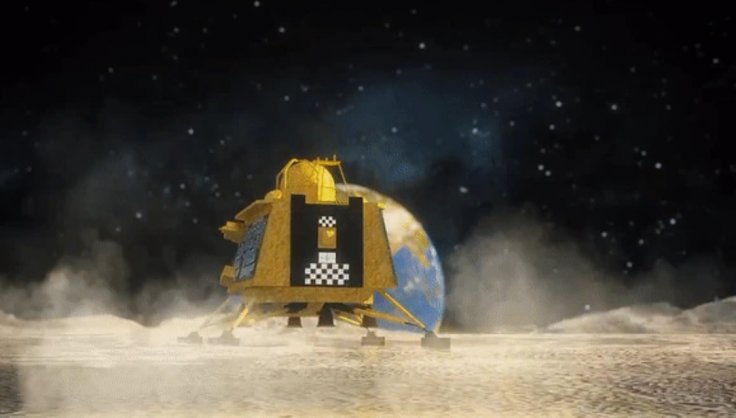India's moon mission Chandrayaan-3 has achieved a successful soft landing near the moon's South Pole, evoking joy among billions and elevating India's status within the distinguished space community. This makes India the first country to land near the South Pole, which is the hot new destination since traces of water were found on the moon.
The historic moment took place at 6:04 pm, Chandrayaan-3's lander, Vikram lander, touched down on the surface of the moon, accompanied by enthusiastic cheers within the war room of India's space agency ISRO. Congratulations poured in on social media platforms.
India on Moon

"India is on the moon," said S. Somanath, chief of the Indian Space Research Organisation (ISRO), as the Vikram landed.
The achievement of a successful landing holds significant implications for India, as it solidifies the nation's status as a space power. This accomplishment aligns with the government's objective of encouraging investment in private space launches and associated satellite-oriented enterprises.
Even Prime Minister Narendra Modi, participating in the event remotely from South Africa, where he was attending the BRICS Summit, expressed his sentiments.

An excited Narendra Modi said, "This moment is invaluable and unparalleled. This moment signifies the triumph of a new India. This moment embodies the power of 1.4 billion heartbeats."
"India reached the uncharted lunar South Pole because of our scientists' hard work and talent... Our moon mission is also based on the human-centric approach, which is why the success belongs to all humanity. It will help moon missions by the other countries in the future," he added.
ISRO Chairperson S Somanath extended congratulations to various key people for their contribution to the success, including project director P Veeramuthuvel, assistant director Kalpana, mission director Srikanth, and URSC director V Sankaran.
P Veeramuthuvel, the project director for Chandrayaan 3, emphasized that ISRO is the pioneer in achieving a landing near the moon's south pole. Assistant director Kalpana also expressed her delight, stating that this was an immensely memorable and joyful moment.
Over the next 14 days, which corresponds to a lunar day, the Pragyan Rover will transmit images and data from the moon's surface. However, its operational capability is expected to decrease following this period, as it relies on solar cells for power.
New Space Power is Born
As the spacecraft neared the lunar surface, people all over the country remained captivated by their television screens, anxiously watching the event unfold. Many also offered prayers as they awaited the historic moment.

"This is a victory cry of a new India," said Prime Minister Narendra Modi, who was seen waving the Indian flag as he watched the landing from South Africa,
In addition to making history by accomplishing the first successful landing near the relatively uncharted south pole region of the moon, India has also joined the ranks of the United States, the former Soviet Union, and China in achieving this remarkable feat.
The Chandrayaan-3 mission launched nearly six weeks ago in front of a cheering crowd, took significantly longer to reach the moon compared to the Apollo missions of the 1960s and 1970s, which managed to arrive in a matter of days.

This extended journey can be attributed to India's use of less powerful rockets than those used by the U.S. during the Apollo missions. To compensate for this, the Chandrayaan-3 probe circled Earth multiple times to gain the necessary velocity before embarking on its month-long journey to the moon.
The challenging terrain of the South Pole makes a successful landing there particularly difficult. However, the presence of water ice in this region holds promise for future missions, as it could potentially provide essential resources such as fuel, oxygen, and drinking water.
India's recent achievement with Chandrayaan-3 marks the country's second attempt at a moon landing. In 2019, ISRO's Chandrayaan-2 mission effectively placed an orbiter in lunar orbit, although its lander faced challenges and crashed during the landing attempt.
On Monday, Russia announced the failure of its first moon mission in 47 years, aimed at the moon's south pole. The Luna-25 spacecraft, intended for this mission, lost control and ultimately crashed into the moon.
Roscosmos, Russia's state-controlled space agency, attributed the failure to a lack of expertise resulting from the extended hiatus in lunar exploration after the last Soviet moon mission in 1976.
The Chandrayaan-3 mission includes a six-wheeled rover that is planned to traverse the lunar terrain, collecting images and data. This rover is expected to operate for a span of two weeks, during which it will conduct various experiments.
These experiments will involve tasks such as performing spectrometer analyses to determine the mineral composition of the lunar surface.








